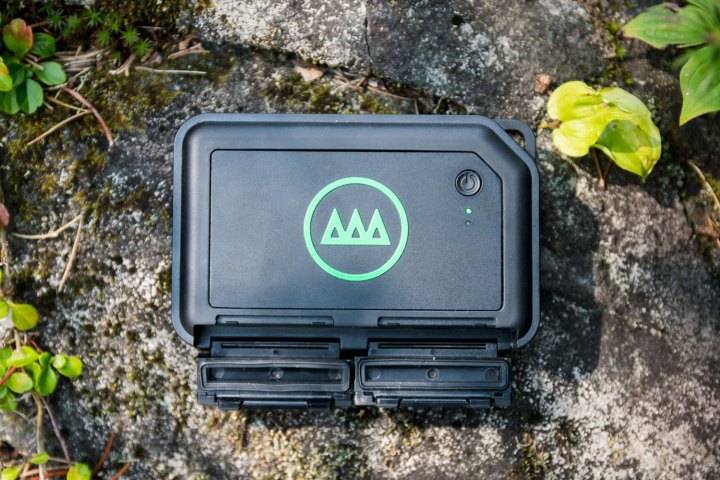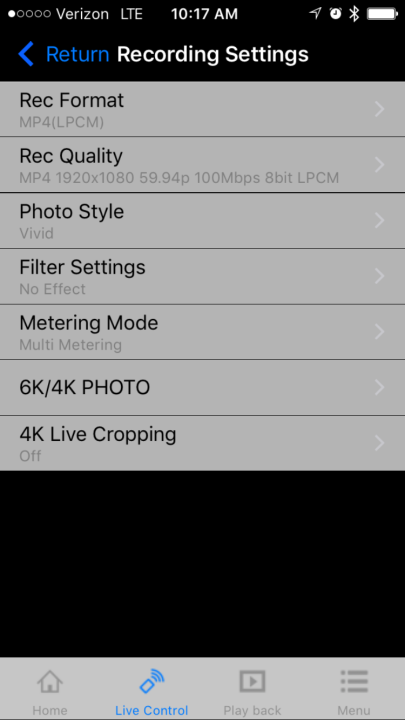
As photographers and videographers, there comes a time when we’re about to set off on a trip, suitcase at that sit-on-to-zip capacity, where we have to wonder if we really need to bring a laptop. The Gnarbox proposes a solution between dragging a laptop somewhere we’d rather not and running into a “card full” warning with nowhere to dump the images or footage. With the promise of being just as indestructible as a waterproof camera, it’s also perfect for those more extreme adventures, as we discovered during our Gnarbox review.
Since we last looked at it, the Gnarbox has gone through some improvements. At its most basic, the Gnarbox is an on-site photo backup system with 128GB of internal storage. Retailing for $299, it looks and functions much like a portable hard drive, except it works independently of a computer. Built-in SD and MicroSD card slots allow for off-loading camera media, while USB 2.0 and 3.0 ports allow for connecting an external drive to add capacity or create a redundant backup, or attach a memory card reader for non-SD formats.
Gnarbox now has a 2.0 version, which is has been successfully funded on Kickstarter and should begin shipping in December. We will compare the two versions to see if it’s worth waiting for the update or settling for the first generation that’s already available.
Design
By length and width, the Gnarbox is about the size of a smartphone (5.3 x 3.4 inches). It is a bit thicker, though, with a depth of one inch, so if you want to fit it in your pocket, you’ll need to bust out that old pair of cargo pants. But the Gnarbox’s one-pound weight makes less of an impact inside a camera bag or suitcase compared to a laptop computer.
As the name might imply, the Gnarbox is designed for heading places you wouldn’t want to take your computer — it’s sealed against rain (though not submersible) and is shock and dust resistant, as well. The exterior of the Gnarbox feels very much like a weather-sealed DSLR. It’s exterior is rugged plastic and certainly doesn’t feel cheap or easily breakable. It’s perfect for backing up footage from drones and action cameras, but is equally capable of handling files from DSLRs and mirrorless cameras and can even recognize RAW formats from many popular manufacturers.
Inside, the Gnarbox uses 128GB of flash memory and 2GB of RAM. Transfer speeds are comparable to a laptop, with read speeds up to 270MB per second and write speeds up to 100MB/s.
Outside of the media ports, the Gnarbox has just a single point of control — the on/off button at the top. Everything else is controlled via the mobile app. A pair of status lights below the power button give an idea what the Gnarbox is doing without looking at the app, with the lights signaling when the Wi-Fi has powered up, when a transfer is in progress, and when the Gnarbox is charging. The company says one charge will last between four and six hours, but the number of files you get out of that will understandably vary based on how big those files are. We were able to transfer 1,500 RAW photos (with a few video files mixed in) twice, saving both to the Gnarbox and to an external hard drive, and still had 63 percent battery life remaining.
The Gnarbox app
Without a screen or keyboard, controlling the Gnarbox requires a mobile app. The box has built-in Wi-Fi and the app is available for both iOS and Android devices. Inside the app, you can transfer images from the SD card to the Gnarbox or to an external hard drive, or both. Using that connectivity, the Gnarbox can also send photos wirelessly to your phone or tablet for editing or sharing.
The Gnarbox app is well organized and easy to use. The wireless connection was painless and worked on the first try. Once connected, the Gnarbox app opens to a home screen with all the files organized by date. Tapping on “Devices” allows you to see what’s on the SD card.
The rainproof, shockproof, and dust-proof Gnarbox is built for conditions that could kill your computer.
Inside the SD card view, the app automatically organizes the files into two categories: what’s already on the Gnarbox and what’s not yet on the Gnarbox. Those categories are then divvied up by date. You can tap on a section (like a date or the entire set of images not yet on the Gnarbox) and transfer them all at once, or you can go through and select photos individually. Once you hit transfer, the app asks if you want to transfer those files to the Gnarbox itself or to an external hard drive, if you happen to have one connected.
As the files transfer, a status bar at the top of the app shows the progress, along with a warning not to remove the card while transferring. If there’s a glitch along the way (like if the connection drops mid-transfer), the app will warn you with a pop-up displaying which files didn’t transfer. Since the files not on the Gnarbox are organized at the top of the screen, it’s easy to go back and retry the transfer.
An incomplete transfer only happened once during our review, probably from dropping the connection to the app. It wasn’t a total disaster — we simply restarted the process. The only other issue we had is that the app may not select every file if it is still indexing the memory card, so we would recommend double checking that everything has correctly transferred before formatting the card without realizing it has a few stragglers still left on it.
Once the files are on the Gnarbox, the home screen displays them, organized by date. Each date category displays how many photos, videos and documents are stored there. Tapping through the images allows you to view the files and even tap a star to mark favorites.
Both photo and video editing is also built right into the app. Photo options include color, exposure, contrast and crop. The editor isn’t the most robust mobile app we’ve seen (sharpening and adjustment brushes, for example, are missing) but works well for quick edits and lets you get something up on Instagram before you get back home to your computer. Of course, you can also transfer files to your phone and open them up in any third party photo editor if you need more control while on the road.
Inside the app’s video editor, you can grab a still frame from the video or trim the video and even string several longer clips together into one file. The same editing features for still photos also allow you to adjust factors like contrast, exposure, and vibrance in video. The app even allows for adding music to the file. Edited videos can then be exported to the Gnarbox itself, or to your phone.
Gnarbox vs. Gnarbox 2.0
Now that the second-generation Gnarbox is approaching the market, what are the differences between the two models? We’re waiting for a review unit, but even just looking at the technical specifications, there are plenty of things to talk about.
Gnarbox 2.0 uses a faster SSD, with backups reaching speeds of up to 100 MBps. The second generation also allows backups without even a smartphone by integrating a screen and four control buttons. There is also now an HDMI port. Adding the screen sacrificed the MicroSD port, however, so you’ll need an adapter for working with the smaller cards.
While the screen allows for smartphone-free backups, the Gnarbox app is still intact — except now there are apps, plural. The Gnarbox 2.0 will run on a family of four apps, one for photos, one for videos, one for transfers, and one for displaying media on the drive. Since the apps are not hardware-based, those same apps will also be available on the first generation Gnarbox.
Gnarbox 2.0 comes in four different capacities, starting at 128GB and going up to 1TB, with the expected retail price between $399 and $999 depending on the capacity. Going with the old version shaves off $100, with the 128GB model starting at $300, but also sacrifices those hardware-based features including the speed improvements and built-in screen.
Computer transfers
Once you get back to a computer, the Gnarbox can be connected almost as easily as any external hard drive. The only extra step is to go into the app and turn on “Mass USB Storage” mode in the settings, which allows the computer to read the drive. From there, files can be dragged and dropped over to the computer, or imported using imaging software like Adobe Lightroom.
The Gnarbox does exactly what it’s designed to do: back up files without a computer. With a rugged design and a simple user interface, it is great for storing photo and video files in the field or while traveling. While the 128GB of storage will last most users through a weekend, we definitely appreciate the ability to connect external hard drives for additional space. The four-to-six-hour battery life will be limiting for anyone who actually wants to spend time editing files after transferring them, so we would recommend keeping the charger with you and a portable power supply if you’re headed somewhere without electricity (the Gnarbox charges over Micro USB).
While the rugged design suggests the Gnarbox is made for rough conditions, its small size and quick, computer-free file transfers could also come in handy for a number of other scenarios, such as backing up wedding photos before leaving the venue. Whether you’re working at a five-star resort or camping in deep bear country, the Gnarbox provides an excellent image backup solution that lets you leave the computer at home.











